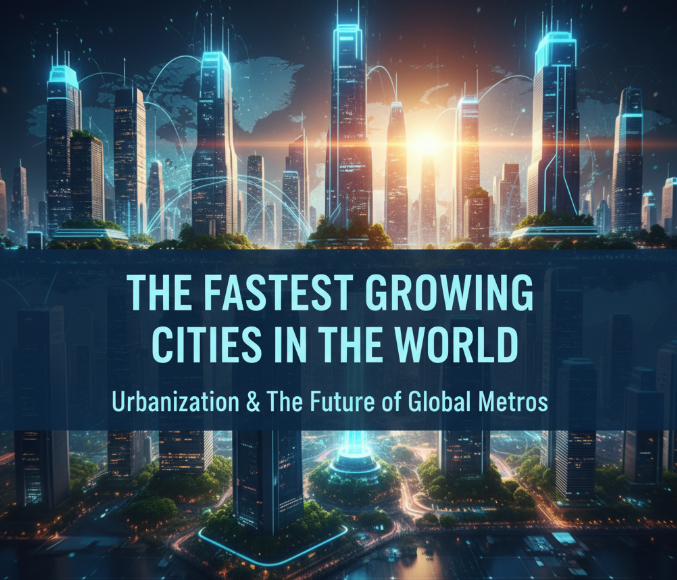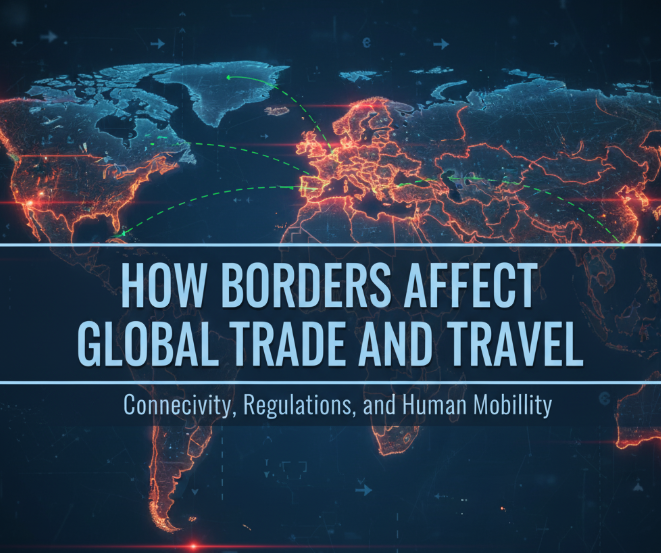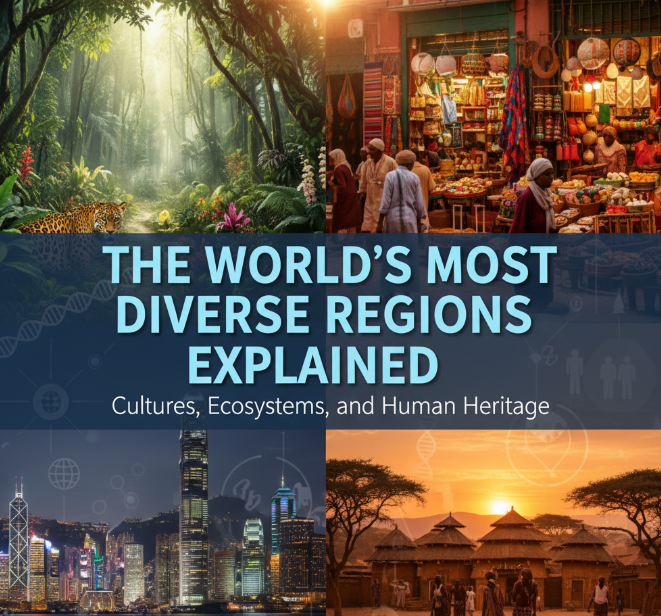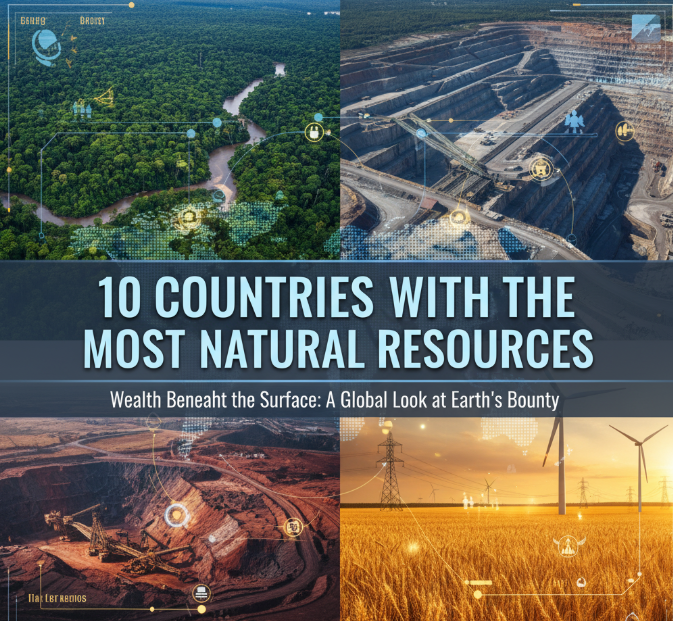Cities around the world are bursting at the seams. Skyscrapers gleam in Asia, tech hubs hum in Africa and bustling cities spread in Europe and Latin America. Day in and day out, thousands fill their bags and journey off to cities, searching for better jobs, more modern lifestyles and new possibilities. This gigantic shift is transforming our planet.
In this article, we’ll examine which cities are growing the fastest, why people are moving there and what rapid expansion means for the future. Whether you’re interested in what’s happening around the world or are looking for adventure, knowing which cities are booming is like a window into the future of tomorrow.
Cities: When Growth Outpaces Water Supply
But before we start clicking through the cities, let’s talk about why this is happening. Millions are being pushed toward cities by several powerful forces.
Better Job Markets
There are more jobs in cities than in the countryside. Technology, healthcare, construction and retail are among a broad range of employment that can be found in urban areas. Young people come to cities in particular for their first jobs and to advance a career.
Modern Infrastructure
Cities usually have better roads, public transportation, hospitals and schools. Residents can count on having access to clean water, electricity and internet. Such basic services draw families to the search for a better life.
Educational Opportunities
In cities, universities, colleges and other institutions of higher learning are found. Young people move to cities for their education and stay in the city after they leave school to make a career.
Economic Development
Governments invest heavily in cities. The new business districts, shopping malls, residential complexes and entertainment zones fuel a spiral of growth that lures yet more people and investment.
Fastest Growing Cities – Top Areas
Let’s take a closer look at the fastest-growing cities in each of those continents. Each area tells its own distinctive growth story.
Urbanization in Asia: The Giant of the Future
Cities in Asia are a dominant presence on the list of fastest-growing cities. The continent’s economic development over the last several decades has been tied to booming urbanization.
Dhaka, Bangladesh
Dhaka is one of the fastest-growing cities in the world. Hundreds of thousands of new residents come to the Bangladeshi capital each year. The garment industry fuels much of that growth, by providing work for millions. The city is one of the most crowded in the world, with more than 23 million people packed into its greater metro area.
Key Growth Factors:
- Booming textile and garment manufacturing
- Rural-to-urban migration seeking employment
- Young, growing population
- Strategic location for trade in South Asia
Delhi, India
The Delhi metropolitan area is still growing rapidly. The city is the country’s political capital and an important commercial center. Tech companies, start-ups and mom-and-pops all make their home here.
Key Growth Factors:
- Government administrative center
- Broad economy from IT to manufacturing
- Great connections with other Indian cities
- Rising middle class with disposable income
Jakarta, Indonesia
Jakarta is still the biggest city and fastest-growing in Southeast Asia. As Indonesia’s economic and cultural hub, it lures people from all over the archipelago of thousands of islands.
Key Growth Factors:
- Indonesia’s economic and financial capital
- Port city with great trade links
- Growing manufacturing sector
- Entertainment and media industry center
Africa: The Emerging Growth Continent
Africa’s cities are booming. In 2050, experts estimate that Africa will have the world’s fastest-growing urban population.
Lagos, Nigeria
Lagos is Africa’s largest city and among the fastest growing in the world. Nigeria’s commercial powerhouse Lagos is a megacity on the coast, responsible for the majority of the nation’s trade and commerce.
Key Growth Factors:
- Major seaport and trade gateway
- Emerging tech scene (“Silicon Lagoon”)
- Nollywood film industry
- Oil industry connections
- Young, entrepreneurial population
Kinshasa, Democratic Republic of Congo
The rate of growth in Kinshasa surprises many. However, the city continues to grow quickly as people from other parts of the country seek opportunities in the capital.
Key Growth Factors:
- Political and administrative capital
- Mining industry connections
- Growing informal economy
- Regional trade hub
Dar es Salaam, Tanzania
The fastest-growing urban area in this East African city is along the coast. It is strategically located and serves as an important port for many of the landlocked countries in the area.
-
Explore more: The World’s Newest Nations and Their Histories
Key Growth Factors:
- Major port serving multiple countries
- Tourism gateway to Tanzania’s attractions
- Growing manufacturing sector
- Stable political environment attracting investment
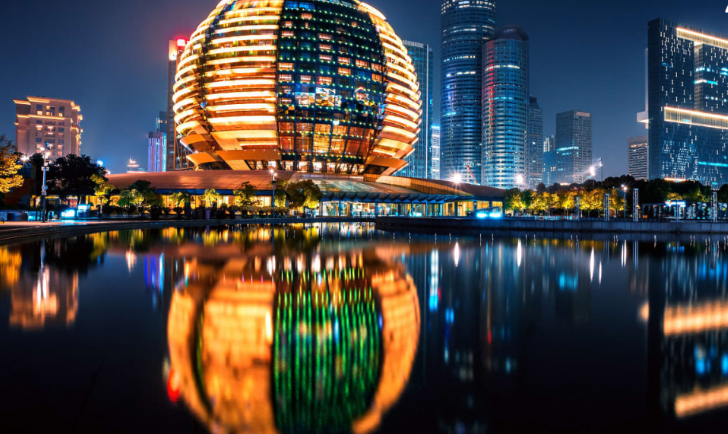
The Fastest Growing Cities in the World
Middle East: Cities From the Desert
The Middle East has been home to some of the planet’s most dramatic urban transformations, as cities grow at speeds unprecedented in other parts of the world.
Dubai, United Arab Emirates
Within the span of a few decades, Dubai changed from a humble fishing village to an international city. Though the pace of its explosive growth has slowed yet from previous years, it remains inexorable through pioneering projects.
Key Growth Factors:
- Tax-free business environment
- World-class infrastructure
- Tourism and luxury retail
- Strategic proximity between the East and the West
- Aviation hub
Riyadh, Saudi Arabia
Saudi Arabia’s capital is undergoing a flurry of growth, particularly with the government’s Vision 2030 initiative to develop sectors outside of oil.
Key Growth Factors:
- Government-led development projects
- Economic diversification efforts
- Regional business headquarters
- Growing entertainment and tourism sector
South America: Rise of Urban Centers
South American cities are also growing, but at a slower pace than Asia and Africa.
Bogotá, Colombia
Colombia’s capital continues to grow as the nation’s economy steadies and expands. The city is emerging as a tech hub of South America.
Key Growth Factors:
- Growing tech and startup ecosystem
- Improving security situation
- Government investment in infrastructure
- Regional business center
Growth Rate Comparison Table
| City | Country | Annual Growth Rate | Current Population (approx.) | Main Source of Growth |
|---|---|---|---|---|
| Dhaka | Bangladesh | 3.6% | 23 million | Manufacturing |
| Kinshasa | DR Congo | 4.2% | 17 million | Rural migration |
| Lagos | Nigeria | 3.5% | 15 million | Commerce & tech |
| Delhi | India | 3.1% | 32 million | Diverse economy |
| Dar es Salaam | Tanzania | 5.1% | 7 million | Port and trade |
| Jakarta | Indonesia | – | – | Business hub |
| Luanda | Angola | – | – | Oil industry |
| Kabul | Afghanistan | – | – | Rural migration |
Note: Approximate growth rates and population of metropolitan areas vary considerably from one source to another.
What Fast Growth Looks Like in These Cities
Rapid growth has advantages and daunting challenges. So let’s have a read of both sides of this thriving urban proliferation.
The Positive Side
Economic Opportunities: The more people, the more companies, innovation, and wealth. Cities come to function as strong economic engines for entire countries.
Cultural Diversity: As if we needed more reasons to live in cities, vibrant urban areas are melting pots where traditions and ideas collide, a fecund cross-breeding that produces food!
Infrastructure Investment: Rapid growth tends to induce gigantic infrastructure projects — new metros, highways, airports and other public places that make everybody’s lives better.
Innovation Hubs: Big populations mean markets for fresh ideas. Now many of the most rapidly expanding cities are becoming tech and innovation hubs, developing ways to address local as well as global problems.
The Challenges
Housing Woes: Cities No Longer Build, and It’s a Problem. This drives slums, informal settlements and speculative real estate prices that put poor families to the edges.
Traffic! If there are more people, they drive more vehicles: that, everyone knows. Many rapidly growing cities are plagued with soul-sapping traffic jams, wasting productive hours and pumping out pollution.
Strain on Services: Schools, hospitals and utilities are stretched to the limit. Shortages of water, electricity and crowded classrooms are daily issues.
Environmental Destruction: Fast, unregulated expansion typically eliminates green areas, pollutes air and water and creates expanding cities’ carbon footprints.
Social Inequality: Not everyone benefits equally from growth. The rich-poor gap widens, and there are social tensions and unrest.
How Cities Are Reining In Growth
Innovative cities are starting to apply smart solutions to keep up with their sustainable growth.
Smart City Technology
Technology is being used in many cities that are growing and want to more efficiently allocate resources. Smart traffic systems, online government services and data-driven planning all make cities work more efficiently.
Public Transportation Investment
Cities like Delhi and Jakarta are constructing huge metro systems. That’s how you reduce traffic, pollution and travel times all at once, while connecting communities.
Sustainable Development Plans
Forward-thinking cities are envisaging green space, bicycle lanes and pedestrian-friendly neighborhoods. These factors make for more liveable cities even as they grow in size.
Affordable Housing Programs
Governments are establishing programs to enable working people to afford decent homes. From subsidized flats to financial tools and other measures, these programs work against a scarcity of homes.
Regional Planning
Some cities are looking at regional partnerships to spread growth more evenly. Building much satellite cities and industrial zones is more practical way to reduce pressure over the mega city at the center.
What the Future Holds
And here’s the rub: Urban growth will keep reshaping our planet. Here’s what experts predict:
Megacities Will Multiply
The world will have more than 40 megacities (cities with more than 10 million inhabitants) by 2030. Most will be elsewhere in Asia and Africa.
Climate Change Impact
Midsize cities are growing and need to adjust for climate change. Coastal communities face the threat of flooding, others with deadly levels of heat or a lack of water. It’s how such challenges are dealt with that will define their success.
Technology Integration
Artificial intelligence, the Internet of Things and automation will change how cities operate. Technology will be a critical component for effectively managing large populations, whether in self-driving cars or the smart energy grid. Learn more about smart city innovations from the United Nations.
Shift in Global Power
And as cities in Asia and Africa expand, so too will the shift of global economic and political power. The most important city in the world tomorrow may not be New York or London but Lagos, Dhaka or Jakarta.
Sustainability Becomes Essential
Cities cannot grow the old-fashioned way. It will be renewables, circular economies and green buildings that separate successful cities from those struggling to survive.
Learning from Success Stories
And some cities have modeled growth very effectively, offering lessons to others.
Singapore’s Masterful Planning
Singapore turned itself from a third world country into a rich city state with careful planning. Top-down development, public investment in housing (where 80 percent of residents live) and a clean, efficient city were the government’s pride.
Seoul’s Transformation
The capital of South Korea has roared back from war to become a global center for digital innovation. It is the result of investing strategically in education, technology infrastructure and public transportation.
Curitiba’s Innovation
This Brazilian city became known for solutions that were innovative, cheap and colorful. And its bus rapid transit system, based on a shoestring budget, became a model for cities around the world.
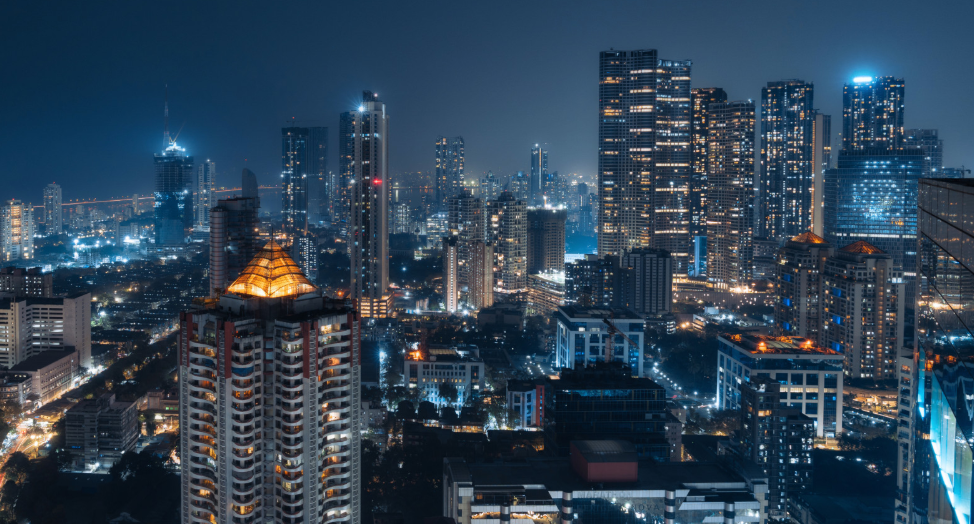
Frequently Asked Questions
What city is the fastest growing in the world?
Currently, one of the fastest growing city in Africa is Dar es Salaam in Tanzania with a 5.6% growth. Well, growth rates vary and various African and Asian cities vie for this spot. We also see very quick growth in Dhaka, Kinshasa and Lagos.
Why are African cities expanding so rapidly?
African cities are rapidly growing due to high fertility rates, migration from the countryside and economic growth. Cities offer job and service concentrations that attract youthful populations to seek opportunity. In fact, many African states are enjoying economic boomtime — drawing both national and foreign investors.
But will the growth of these cities ever end?
Yes, cities get to a point of maturity and then growth slows. It occurred with cities in rich countries. When countries grow richer and the countryside gets better, people have less incentive to move to cities. But in many poor nations, cities will keep growing for a couple of generations.
What challenges do cities face as they become more crowded?
The main issues include a shortage of housing, high-traffic transport networks, lack of infrastructure, pollution and scarcity of water and social inequality. Growth and quality of life Cities have to balance growth with quality of life, which is a very challenging task that will require serious planning and plenty of money.
What are the environmental effects of fast-growing cities?
The rapid growth of cities tends to raise carbon footprints, air and water pollution, waste generation, and the devastation of natural habitats. And yet, well-designed dense cities can in fact be ecologically more efficient than sprawled-out suburbs, because they require less energy per capita and preserve rural land.
Can rapid growth be a good thing for a city?
Yes, well-managed growth can bring economic opportunity, cultural energy and better infrastructure. The key is planning, investing in sustainable development and ensuring that growth benefits all residents — not just the wealthy.
Where will growth in cities be fastest in the future?
Urban growth through 2050 will be concentrated in Africa and Asia. Eighty-nine percent of urban population growth is forecast in these two continents, with a significant proportion in India, China, Nigeria and Pakistan.
Are rapidly expanding cities safe to live in?
Safe levels also differ widely for fast-growing cities. Others, such as Dubai or Delhi, have lower crime levels. Others struggle with security challenges. Fast growth can put a strain on police resources and produce inequality that sometimes leads to crime, but it doesn’t have to if there’s good governance.
Wrapping Up: Cities Shaping Tomorrow
The world’s fastest-growing cities are writing tomorrow’s story today. From Dhaka’s ear-splitting garment factories to Lagos’s promising tech start-ups, they are where millions strive and aspire, dreaming into their futures.
These cities confront huge challenges — congestion, pollution, inequality and public infrastructure deficits. You also have the best opportunities for mankind to innovate, grow economically and exchange culture. How we navigate this urban century will shape our shared destiny.
And by understanding these growth patterns we are better prepared for a world where most of the population lives in cities. Whether you are a student thinking about where to work, a professional mulling over job opportunities overseas or just someone curious about our planet on the edge of change, these fast-growing places give an idea of what’s ahead.
The city revolution isn’t stopping. These cities are laboratory experiments in testing new ideas about how humans can live together, sustainably and prosperously. Theirs is a project that, if successful or failed, will define the 21st century and beyond.
Yet as these cities proceed their fantastic growth, they remind us that change is constant and to adapt is indispensable. The cities that succeed aren’t likely to be the largest in size, but those that expand smartly and sustainably, and develop in an inclusive way — providing opportunities for all their residents while ensuring a healthy planet.

